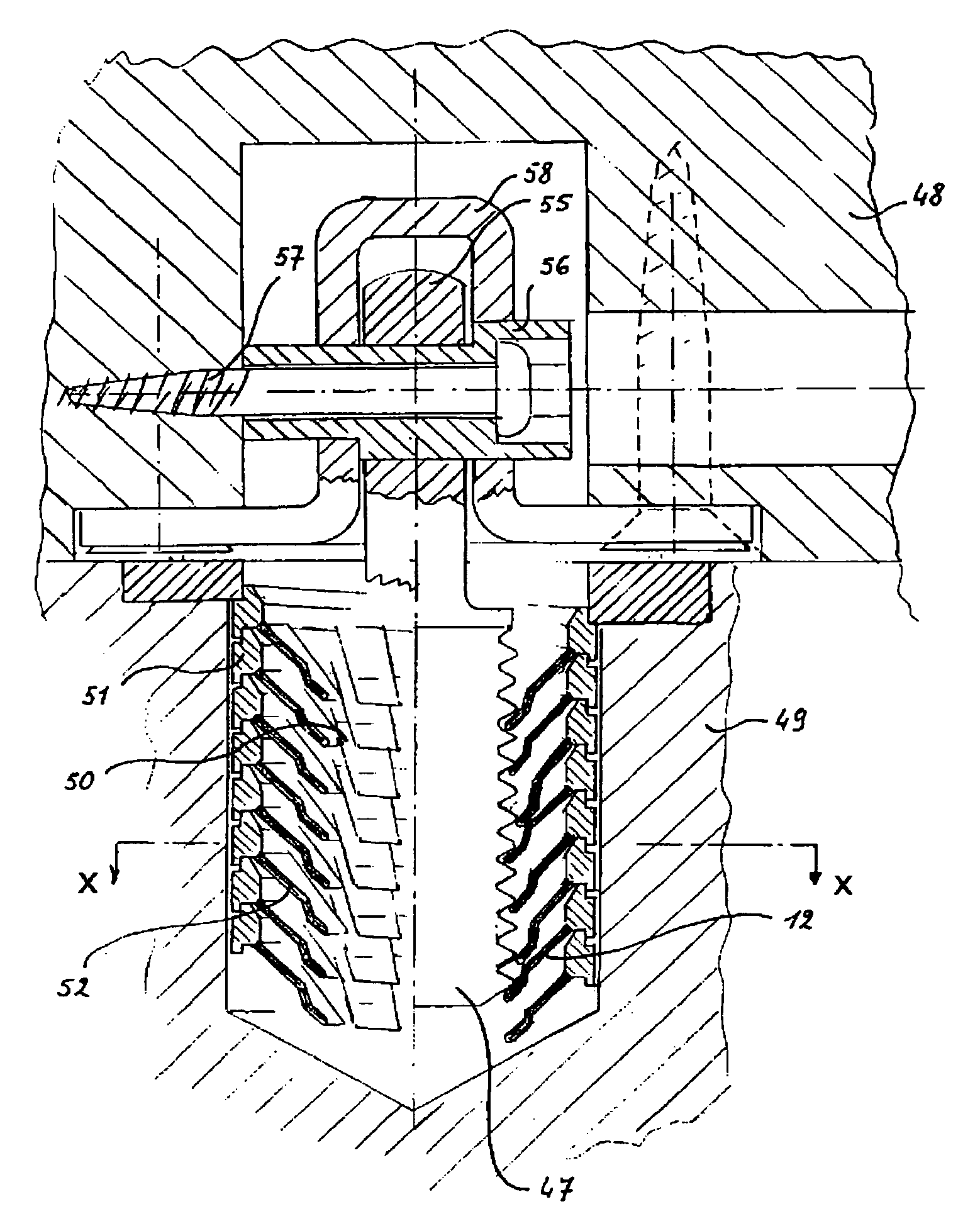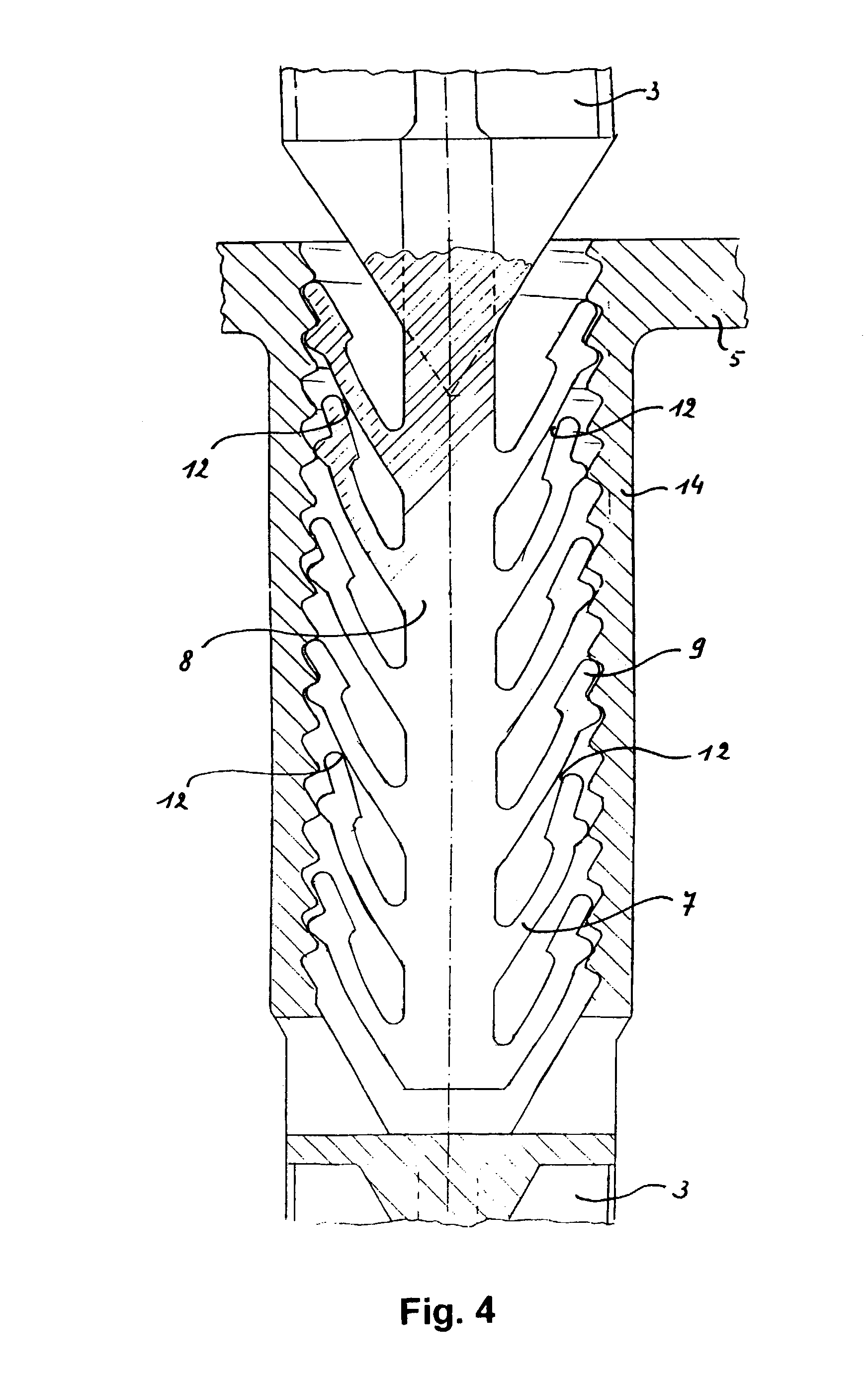System for connecting elements
a technology of connecting elements and components, applied in the direction of threaded fasteners, sheet joining, fastening means, etc., can solve the problem that the sheath cannot be used, and achieve the effect of not being damaged
- Summary
- Abstract
- Description
- Claims
- Application Information
AI Technical Summary
Benefits of technology
Problems solved by technology
Method used
Image
Examples
Embodiment Construction
[0019]FIG. 1 shows a connecting element 1 according to the invention, comprising a female part 2, a rod 3, the length of which may vary, and a male part 4.
[0020]The female part 2 comprises a cylindrical portion 14 that is provided, near one end, with a ring-shaped flange 5. The cylindrical portion 14 is provided with a bore 6 being inwardly provided with a screw thread. In the illustrated embodiment, the bore 6 is provided with an appropriate screw thread with a determined pitch. The screw thread is preferably of a type being also convenient for use in combination with parts having a standard screw thread. The other end of the cylindrical portion 14 is conical and forms thereby a passage and a connection towards the rod 3.
[0021]In the embodiment shown in FIG. 2, the rod 3 has a cross-shaped section, but the rod 3 may obviously have different shapes. The most important is that the rod 3 should form a spacer between the male part 4 and the female part 2 and should therefore be suffici...
PUM
 Login to View More
Login to View More Abstract
Description
Claims
Application Information
 Login to View More
Login to View More - R&D
- Intellectual Property
- Life Sciences
- Materials
- Tech Scout
- Unparalleled Data Quality
- Higher Quality Content
- 60% Fewer Hallucinations
Browse by: Latest US Patents, China's latest patents, Technical Efficacy Thesaurus, Application Domain, Technology Topic, Popular Technical Reports.
© 2025 PatSnap. All rights reserved.Legal|Privacy policy|Modern Slavery Act Transparency Statement|Sitemap|About US| Contact US: help@patsnap.com



